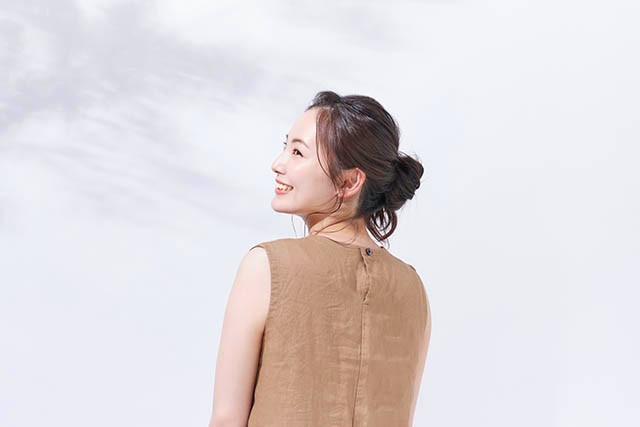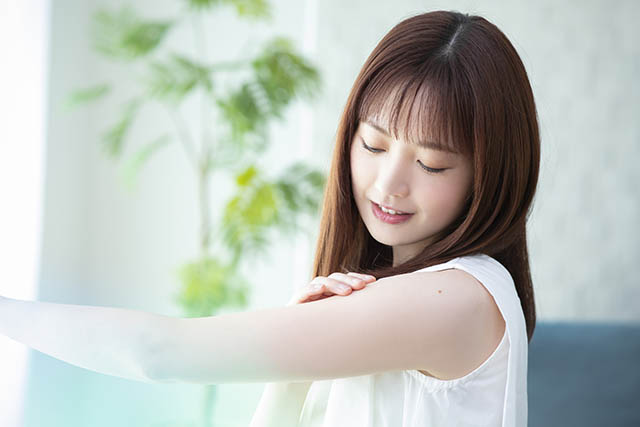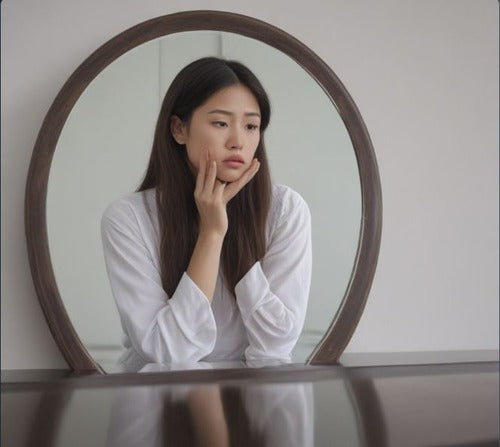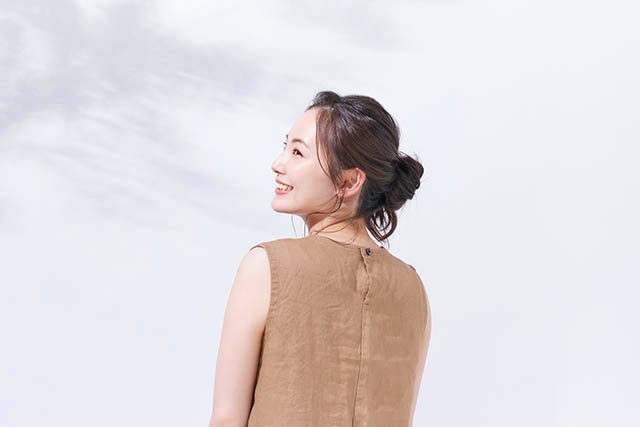
#Skin Problem #UV protection
2024/02/07
Caring for sunburn within the first 72 hours is crucial! What are the effective coping methods for sunburn?
Topic
- What should I do for post-sunburn care?
- Prevent the formation of spots and freckles after sunburn by using skincare products with whitening skincare.
- How to choose sunscreen and use it effectively?
- Be mindful to apply sunscreen to often overlooked areas!
- UV protection should be a regular part of your skincare routine!
- Conclusion
What should I do for post-sunburn care?
Even though you've been careful to avoid sunburn, it's quite common to end up with one.
Sunburned skin is in a state similar to a mild burn.
Moreover, UV rays can weaken the skin's barrier function, leading to loss of moisture and dryness.
Even if you don't feel any pain from the sunburn, if you've been outdoors without applying sunscreen, it's advisable to perform proper aftercare once you return home.
These are 3 essential steps for post-sunburn care.
- Cool down the sunburned skin.
- Moisturize the sunburned skin.
- Proper nutrition and sufficient sleep to aid in sunburned skin recovery.
We will provide you with the details step by step.
1. Cool down the sunburned skin

Sunburned skin is akin to a mild burn.
If your skin feels hot or tingling from sunburn, it's essential to cool it down until the burning sensation subsides.
The following are some tips to cool the skin after sunburn:
- Cool down the skin with cold water.
- Wrap a wet towel around the affected area.
- Apply ice or cold packs wrapped in a cloth to avoid direct contact with the skin.
When using a wet towel, be gentle to avoid further irritation.
It's important to note that prolonged cooling of the same area with ice, cold packs, or other cold objects may result in frostbite.

How long should I cool down the skin?
You can continue cooling the skin until symptoms such as heat and tingling are relieved.

Ito,
Saishunkan Co. Ltd.
2. Moisturize the sunburned skin.

Once you have sufficiently cooled the skin, it's important to replenish the lost moisture caused by sunburn through moisturization.
UV rays weaken the skin cells' ability to produce water, leading to a lack of moisture deep within the skin. This dehydration can result in skin issues such as dryness.
Since sun-damaged skin tends to be more sensitive, exercise extra caution when applying skincare products.
After sunburn, the skin may undergo peeling, but avoid forcibly removing the skin, as this can lead to itching and skin irritation.
Additionally, there's a risk of uneven coloration, such as peeled and unpeeled skin, so it's best to allow the skin to naturally peel while providing moisturizing care.
Using a gentle moisturizer on sunburned skin is beneficial. You can create a soothing cotton pack by soaking a cotton pad with lotion. Apply the cotton pad to both cheeks, forehead, nose, and chin, and leave it on for about 5 minutes to allow the lotion to be absorbed steadily. Refrigerating the lotion beforehand can enhance the cooling effect. After removing the cotton pad, gently blend the remaining lotion on the face with the palms of both hands to allow it to penetrate the skin, preventing moisture from evaporating from the skin's surface. Following the pack, apply moisturizer and cover with a cream or similar product to prevent moisture loss.

It's important to moisturize after cooling the skin!
Absolutely! Make sure to replenish the lost moisture!

Ito,
Saishunkan Co. Ltd.
3. Proper nutrition and sufficient sleep to aid in sunburned skin recovery.
If your skin is damaged by sunburn and you're experiencing hot flushes, consider using lukewarm water when showering to avoid further irritation.
For hydration, opt for natural or mineral water as the body lacks minerals after sunburn. Avoid drinks like iced coffee or cold green tea, which contain caffeine and can contribute to dehydration. Instead, choose non-caffeinated options like barley tea or water.
Vitamins A, C, and E have antioxidant effects and can help suppress the production of melanin pigment, which causes spots and freckles.
Lycopene, found in tomatoes and red bell peppers, also has high antioxidant effects and scavenges reactive oxygen species produced by UV rays.
Polyphenols, another group of antioxidant nutrients found in chocolate, cocoa, coffee, blueberries, and other foods, can make the body less sensitive to oxidation when consumed before UV ray exposure.
Getting enough sleep is important for preventing skin problems caused by UV rays. Lack of sleep can slow down the skin's metabolic cycle and lead to skin issues. After sunburn, it's important to prioritize rest as the body may feel more fatigued after exposure to large amounts of UV rays.
Prevent the formation of spots and freckles after sunburn by using skincare products with whitening skincare.

Sunburn can indeed lead to the formation of spots and freckles.
When the skin is exposed to UV rays, which cause sunburn, it responds by producing excessive amounts of melanin as a defense mechanism.
If this surplus melanin is not properly addressed, it can result in the formation of spots on the skin.
After experiencing sunburn, it's important to allow the skin to calm down from any hot flashes and ensure it is adequately moisturized. Following this, using skincare products with whitening effects can help suppress the overproduction of melanin, which is responsible for the formation of spots.
Additionally, considering that approximately 80% of skin aging is attributed to photoaging, including UV ray exposure, it's crucial to address any UV damage caused by sunburn. Therefore, utilizing skincare products with whitening effects becomes essential in combating excessive melanin production and easing UV damage.
UV rays indeed have a profound impact on various skin concerns such as spots, wrinkles, and sagging skin. Skin aging due to UV ray exposure progresses over years of continuous exposure. While it may not be feasible to completely avoid UV rays, it's important to protect the skin from them using sunscreen, parasols, hats, and other protective measures.
Moreover, immediately after UV ray exposure, the skin's barrier function is compromised, making it more susceptible to various types of stimuli. Therefore, taking proper care of the skin post-exposure is crucial in mitigating damage and maintaining skin health.
How to choose sunscreen and use it effectively?
UV damage accumulates over a long period, not just one or two days.
Therefore, it is advisable to take UV protection regularly by using sunscreen, etc.
Below, we introduce how to choose sunscreen for the basics of UV protection.
How to choose sunscreen

What do the often mentioned sunscreen terms “PA” and “SPF” mean and what is the difference between them?
In the first place, UV rays reaching the ground are divided into 2 main types according to their wavelength, “UVA” and “UVB”.
UVA are UV rays with long wavelengths and UVB are UV rays with short wavelengths.
UVA, which have a long wavelength, penetrate deep into the skin and cause ageing like issues such as spots and sagging skin.
UVB, which have a shorter wavelength, do not penetrate as deeply into the skin, but are stronger than UVA and causes inflammation and redness on the surface of the skin.
The PA on the sunscreen package is a guideline of protection against UVA, which reach deep into the skin, and the SPF is a guideline of protection against UVB, which reach the surface of the skin.
PA is indicated by a 4-level “+” symbol. Higher level (more “+”), the more effective protection against the UVA.
SPF is indicated by a numerical value ranging from 1 to 50. The higher the number, the more effective protection against the UVB.
However, it is not as simple as just "choosing the product with a higher PA or SPF number”.
The choice and use of sunscreen vary depending on the ingredients in the sunscreen and the situation.
If you are indoors or just doing a little shopping, you don't need sunscreen with a high value. If you are doing sports under the hot sun, you will need something with a higher value.

When choosing sunscreen, all we have to do is look at the PA and SPF values!
Yes, that's right!

Ito,
Saishunkan Co. Ltd.
2. Effective way of using sunscreen

Now we will introduce an effective way of using sunscreen.
The important thing is to apply the prescribed amount evenly.
If less than the prescribed amount is applied, it will not be effective enough.
Also, keep in mind that if you sweat, the sunscreen will wash off and the UV protection effect will be reduced.
Wiping sweat with a towel in a horizontal direction is also undesirable, as it not only removes the sunscreen, but also irritates the skin.
When wiping sweat with a towel, try to press down from above to absorb the sweat.
When applying to the face, use a large pearl-sized amount of sunscreen and place it in 5 dots on the forehead, nose, cheeks, and chin.
Spread the sunscreen over the face as mentioned before, using tips of your fingers. At this point, be aware that you should not exert too much pressure, but gently and softly spread and blend it onto the skin.
In particular, apply carefully around the hairline and nose area, as these areas are prone to unevenness.

It’s also better to be careful how we use towels!
Yes, it is! Try to make the sunscreen effect last as long as possible!

Ito,
Saishunkan Co. Ltd.
Be mindful to apply sunscreen to often overlooked areas!
When using sunscreen, even if you have taken all the necessary precautions for your face, limbs, and other areas of concern, you may miss some parts of your body.
So, we introduce 5 points where people tend to forget to apply sunscreen.
1. Ears
The skin of the ears is thin and delicate and is therefore particularly sensitive to UV rays compared to other parts of the body.
In particular, when you spend a lot of time outdoors where UV rays are strong, apply sunscreen from the earlobes to the entire back of the ears.
2. From the face line to the décolleté
It tends to forget to apply sunscreen from the face line to the décolleté (neck to chest).
If this area gets sunburned, it can cause a difference in skin color between the face and neck when the foundation is applied, resulting in a white cast.
To prevent you from forgetting to apply, we recommend using a three-sided mirror that allows you to check from different angles.
3. Back of the neck
The skin of the ears is thin and delicate and is therefore particularly sensitive to UV rays compared to other parts of the body.
In particular, when you spend a lot of time outdoors where UV rays are strong, apply sunscreen from the earlobes to the entire back of the ears.
4. Back of the knees
Back of the knees is not only hidden and easy to forget when applying sunscreen in a squatting position but is also difficult spot to reach.
It is especially important when wearing bottoms such as skirts and half-pants, as they don't protect against sunburn.
5. Top of the feet
If you forget to apply sunscreen when wearing shoes that expose the top of your feet, you can get 'pump burn' or 'sandal burn'.
Maybe some of you experienced the embarrassing situation where you had to take off your shoes having tanlines on top of your feet.
Before going out, check your entire body with a standing mirror to make sure you haven't forgotten to apply sunscreen everywhere necessary..

Any of these areas are easy to forget to apply sunscreen!
Yes, they are! Be careful not to forget to apply it and take good UV protection.

Ito,
Saishunkan Co. Ltd.
UV protection should be a regular part of your skincare routine!

The basic UV protection is to apply sunscreen, but sunscreen alone actually does not block all UV rays.
To avoid sunburn, it is necessary to take UV protection besides sunscreen.
- Avoid times of day when UV rays are strong
- Take advantage of the shade
- Use a parasol or wear a hat
- Cover with clothing
- Wear sunglasses
- Remember to take UV protection even when indoors
1. Avoid times of the day when UV rays are strong
UV rays are particularly high between 10 am and 2 pm, and these 4 hours are said to account for 50% of all UV rays that fall in a day.
When going out, try to avoid periods of high UV rays as much as possible, or take all possible measures such as using a parasol or hat, or wearing sunglasses.
2. Take advantage of the shade
When going out, try to avoid exposure to the sun as much as possible and take advantage of the shade.
However, UV rays are not only coming directly from the sun in the sky but also scattered in the atmosphere and indirectly reflected from the ground and buildings. Remember that even if you are in the shade without direct sunlight, you are still exposed to UV rays.
3. Use a parasol or wear a hat
Recently, there have been parasols with enhanced UV protection. And hats can help you block direct sunlight.
However, while parasols and hats can protect against direct UV rays from the sun, they cannot protect against UV rays scattered in the atmosphere, so UV rays that cannot be blocked by a parasol or hat should be prevented by applying sunscreen, etc.
4. Cover with clothing
Clothing that covers more of the body, such as a shirt with long sleeves and a collar, will better protect the neck, arms, and shoulders from UV rays.
Choose clothing made of tightly woven or knitted fabrics to reduce the amount of UV rays reaching the skin.
Also, some clothes are made from materials that block UV rays nowadays.
5. Wear sunglasses
It has been shown that UV rays can also cause damage to the eyes.
Proper use of sunglasses or UV-cut glasses can cut UV exposure to the eyes by 90%. However, if the light is completely blocked out, the pupils will open and you will be exposed to extra UV rays, so sunglasses that are lighter in color and offer good UV protection are recommended.
6. Remember to apply UV protection even when indoors
UV rays reach the earth's surface not only on sunny days, but also on cloudy and rainy days.
UV rays also pass through windows, so it is not secure even if you stay indoors or in your car. In particular, be careful in sunny living rooms and offices near windows, so remember to apply sunscreen even if you are indoors. Also, UV-cut curtains in sunny rooms and UV-cut film on windows can be effective.

There are indeed numerous UV protection measures!
It may seem like a bit of effort, but it's worth it for the sake of your skin. Keep persevering!

Ito,
Saishunkan Co. Ltd.
Conclusion

I've understood the sunburn care instructions and preventative measures very well! Thank you very much.
No, no, no! I am glad I could be of help. Please take good UV protection daily to achieve healthy skin! We have organized the key points, so please check them out♪

Ito,
Saishunkan Co. Ltd.
- UV protection is important within 72 hours of sun exposure!
- After being in the sun, it's essential to cool down and then moisturize your skin.
- Adjust your sunscreen based on the situation, whether you're engaging in leisure activities or simply shopping.
Domohorn Wrinkle can be used in all seasons and for all skin types.

Do you know the primary cause of the various problems that appear on your skin?
In most cases, it is a decline in the skin's natural ability to repair itself. In order to fundamentally review the skin condition, it is important to bring out "the skin's self-repairing power. Domohorn Wrinkle focuses on this primary cause as well as the problems of spots and wrinkles. It delivers the ingredients that are necessary for mature skin to every corner of your face, working in stages.
Of course, skin can suffer from unexpected problems. If this happens, you can always consult us. We will work with you to find the right solution for your skin. We will continue to stand by you.





I accidentally forgot to apply sunscreen and ended up getting sunburned... What should I do?
Did you know that taking care of your skin within 72 hours after getting sunburned is essential?
Ito,
Saishunkan Co. Ltd.
I didn't know that! Why is it important to take care within 72 hours?
That's because melanin, which causes spots and freckles, is produced 72 hours after getting sunburned.
Ito,
Saishunkan Co. Ltd.
I see! I would like to know more about the care points after getting sunburned to prevent the formation of spots and freckles!
I understand! In that case, I will introduce aftercare methods and recommend skincare products for post-sunburn care!
Ito,
Saishunkan Co. Ltd.